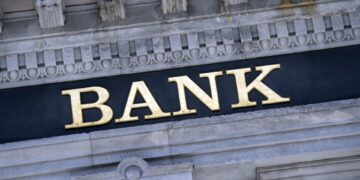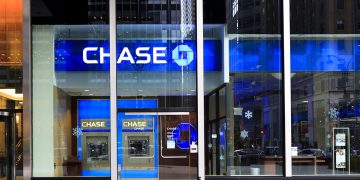
Brazil has started the implementation of open banking, hoping to revolutionize its financial system.
Adoption started gradually in early February and should lead to wins but also losses.
Open banking is a set of rules and technologies that allows the sharing of customer data and services, with clients’ consent, between financial institutions through the integration of their systems.
The approach should increase transparency, competition and so generate innovative business models and lower prices. Large banks tend to lose the monopoly over their customers’ information. Smaller and digital banks have a lot to gain from accessing this data.
With the shared data, fintechs could know that a person is paying very high interest rates on a loan at a certain bank and offer a lower rate to win that customer.
“For us, strategically, [open banking] is very good. We are a new digital bank. We don’t have as much information about customers as traditional banks. We will be able to receive data that would otherwise take a long time to arrive,” Breno Guelman, head of BS2 bank, told BNamericas.
BS2 has been in the market for 29 years, but in the past it operated as Banco Bonsucesso, offering payroll loans. In 2015, Bonsucesso entered into a joint venture called Olé with Banco Santander for the payroll segment.
The remaining structure of Banco Bonsucesso was overhauled, first launching services, such as currency exchange, card acquirer operations, credit, among others, and then digitizing all of them.
“When we saw that we had it all, we decided to consolidate our business into a digital structure,” Guelman said.
The bank invested 3mn reais (US$460,300) in its open banking project in 2020. About 45% of BS2’s staff is from the technology team.
BS2’s digital bank was developed based on already integrable application programming interfaces (APIs), which allow information to be exchanged between two or more systems, according to Guelman. APIs are the building blocks of the open banking concept.
Under central bank rules, open banking APIs will not only have to guarantee the secure transmission of data between financial institutions and companies, but also follow the performance and format standards of information defined by the regulator.
About 90% of BS2’s application programming interface already meets the regulatory standards and is ready to connect to open banking, Guelman said.
BS2 has an app with account, cards and credit features and is mostly focused on the corporate segment. The bank has around 1mn customers and aims to increase this base on top of open banking.
DOUBLE-EDGED SWORD
But the shared proposal of open banking could affect certain business models and even push companies out of the market.
The total number of fintechs in operation in Brazil jumped from 604 in June 2019 to 771 in August 2020. The evolution represents a growth of almost 28%, according to the latest Radar Fintechlab report.
“Open banking comes to clash with several business models. Many will cease to exist and many new things will emerge. The potential is immense,” the central bank’s head of regulation, João André Marques Pereira, said in a recent online interview.
The technology investments of Brazil’s largest banks grew 48% in 2019, to 24.6bn reais, according to the 2020 edition of a technology report by banking association Febraban.
In the wake of open banking and instant payment system PIX, which went live last November, the financial system is expected to increase technology spending even further.
“With the user in charge and being able to choose the services and the supplier that best suit their wishes, fintechs, banks and corporations will have to reinvent their strategies and structures in order to offer the services that most correspond to the needs of their consumers,” Marin Mignot, regional COO of French financial solutions firm Ingenico said in a statement.
Marcelo Godke, a lawyer specialized in financial and corporate law, said Brazil has an extremely concentrated banking market, with four or five financial institutions dominating almost 90% of bank assets.
Open banking could reduce this concentration and lead to lower interest rates, Godke said.
But the increase in competition could also trigger a fierce price war.
As competition around prices and fees intensifies, large banks may have an edge over other players by having lower funding cost and a better structure to cushion pressure on margins, BS2’s Guelman said.
“[Open banking] also increases competitiveness among digital banks. It will be an intense fight. We’ll definitely target the same customers. Offers will prevail over technology,” the executive said.








